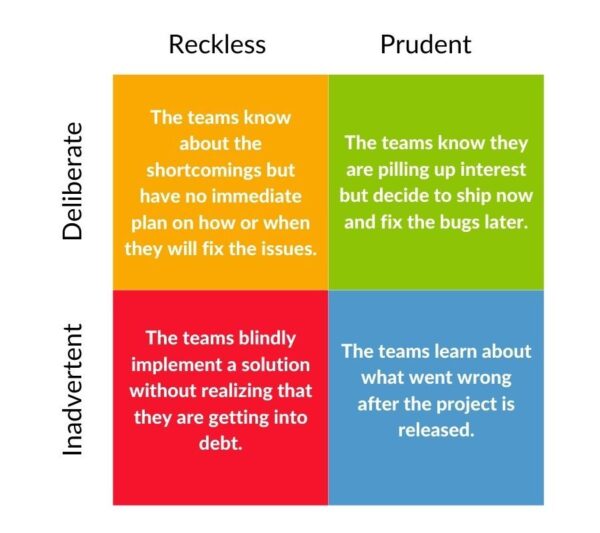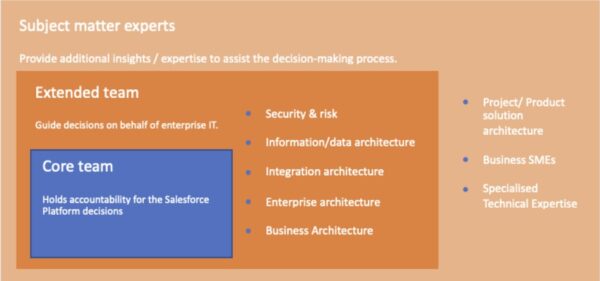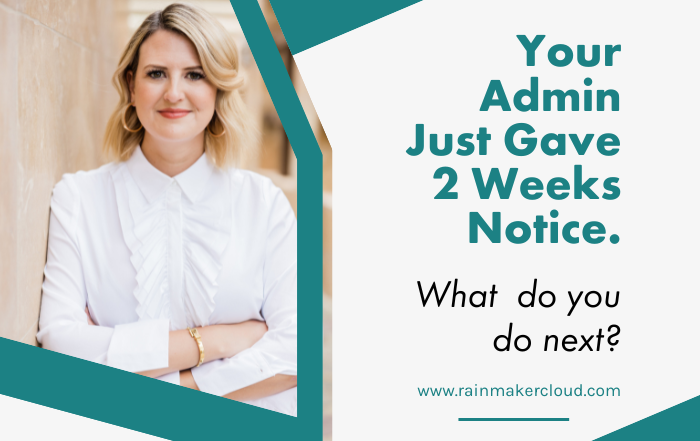How to Be Free of Salesforce Technical Debt
Salesforce is a leading CRM platform with over 150,000 customers. There’s a good chance that you’re already familiar with Salesforce’s suite of cloud-based products, but you might not be aware of these strategies for avoiding Salesforce technical debt.
Technical debt is frequently discussed but rarely understood. A strong grasp on Salesforce integration and strategies to avoid technical debt can give organizations a leg up on their operational efficiency.
Integrating with Salesforce is easy with Rainmaker’s Salesforce managed services. Rainmaker takes the guesswork out of Salesforce integration so that you can spend your time doing what you do best.
Defining Technical Debt
Unlike financial debt, technical debt is not an actual owed obligation. The phrase “technical debt” is an analogy to conceptualize time investment. You don’t owe a technical debt to anyone other than yourself and your stakeholders, but the concept of technical debt helps you understand how your investments impact future performance.
Ward Cunningham originated the term “technical debt” in 1992 by analogizing shipping code to going into debt. He explained that going into a little bit of debt can be a good thing if you repay it swiftly. In other words, shipping imperfect code can be good if you’re diligent in following up with further development and fixing. To compare it to another aphorism, “don’t let perfect be the enemy of good.”
Today, the idea of technical debt describes the tradeoff between expedient solutions and long-term efficiency. Put more simply, doing it quickly vs. doing it right. Despite how that may sound, doing it “right” is not always the best choice for an organization because perfectionism can extend timelines and delay rollouts.
Causes of Technical Debt
Technical debt doesn’t just accrue out of laziness. There are many types of technical debt, such as service debt, design debt, and code debt, but the most important distinction is between deliberate and inadvertent debt.
- Deliberate tech debt is technical debt that accrues by design. Software development is a tightrope walk between quality and speed, and many users have a “fail fast and fail often” approach that dictates releasing software as soon as possible. Why would they want to fail quickly? Because fast implementation provides opportunities for user feedback, bug discovery, and agile development. Deliberate technical debt is a strategy for iterative rollouts, and despite the connotation of the word “debt,” deliberate technical debt can be a good thing.
- Inadvertent tech debt is technical debt that accrues by mistake. Inadvertent technical debt arises from inexperience, inefficiency, or lack of understanding. Inadvertent technical debt is the main type of debt that organizations should work to eliminate because unaddressed technical debt can accumulate and snowball over time. Inadvertent technical debt is especially dangerous because managers may not even know that it exists until it’s resulted in serious problems down the line.
In addition to deliberate and inadvertent technical debt, you can also categorize technical debt as either reckless or prudent. Martin Fowler’s technical debt quadrant categorizes types of technical debt on scales of inadvertent vs. deliberate and reckless vs. prudent.

Salesforce Optimizer
Thankfully, organizations aren’t left to their own devices when managing their technical debt. Optimizer is a native Salesforce application that diagnoses the way your organization uses Salesforce’s features.
Salesforce Optimizer helps users identify quick fixes (issues they can address in 30-60 minutes) and long-term trends and insights. While technical debt can be an effective safety rail, it can also be a Band-Aid solution to systemic problems, and Salesforce Optimizer sheds light on these large-scale issues so that organizations can break free from their Salesforce technical debt.
Salesforce Governance
Salesforce promotes the Center of Excellence (CoE) governance model, which consolidates decision-making authority and creates a unified hub for user feedback.
A Center of Excellence should be comprised of business, technology, and departmental stakeholders and overseen by a project owner. The purpose of a CoE is to standardize processes, set a clear process for decision-making, provide a point of contact for user feedback, set design standards, and manage project rollouts.
In conjunction with a Center of Excellence, Design Authorities assure decision-makers that design choices will accomplish their technical purposes, promote design consistency, and prevent technical debt.

Have a Salesforce Technical Debt Strategy
The key to preventing unnecessary technical debt is to have a debt prevention strategy. Your Salesforce technical debt prevention strategy requires discipline and vision and should include several key components.
- Track Costs. While technical debt is just a metaphor for financial activity, actual costs aren’t metaphorical. Tracking actual costs/resource expenditures is essential for recognizing technical debt and identifying areas of technical debt that require attention and priority. The time you and your team spend making up for past expediencies is the most significant cost of technical debt.
- Have a Plan for Accountability. When nobody owns a project, it’s easy to keep kicking the can down the road. After all, why not order the whole menu when you don’t plan on paying the check? Designating a product owner ensures that someone with long-term stakes in the success of the project can make decisions about technical debt, knowing that they’ll be accountable for the outcome.
- Keep the Big Picture in Mind. Technical debt is a significant liability for your organization. Not only because of the time cost of fixing technical debt, but because of the issues, technical debt can cause for your organization. By keeping the big picture in mind, organizations can contextualize the cost of technical debt and focus resources appropriately.
How Rainmaker Can Help You Become Free of Salesforce Technical Debt
Salesforce is a powerful platform but integrating your data with their cloud-based system is a technical process. Rather than driving your organization deeper into technical debt, it’s essential that your Salesforce integration gets done right.
If you aren’t sure where to go next, Rainmaker is here to help. Rainmaker’s Salesforce integration solutions help organizations connect to Salesforce’s platform. Take the guesswork out of your Salesforce services and avoid future technical debt by taking advantage of Rainmaker’s technological expertise.
Rainmaker is an expert in Salesforce managed services. To learn how Rainmaker can help your organization eliminate Salesforce technical debt, schedule a meeting today.






